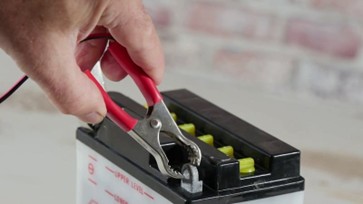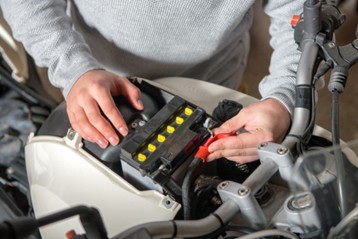Batteries are crucial for both motorcycles and cars, powering their electrical systems and enabling engine ignition. However, the batteries for each vehicle type differ significantly in size, power demands, and mechanical needs.
This paper explores these differences, drawing from works such as Motorcycle Electrical Systems: Troubleshooting and Repair by Tracy Martin and The Motorcycle Electrical Manual by Matthew Coombs.
1. Size and Capacity
Motorcycle batteries are smaller, typically ranging from 5-30 Ah, due to limited space and lower power needs. Car batteries, on the other hand, have capacities between 40-100 Ah, powering more systems like lighting and air conditioning.
2. Voltage
Most motorcycles use 12V batteries, although smaller models may utilise 6V. Cars also use 12V batteries, with some EVs requiring higher voltages.
3. Cold Cranking Amps (CCA)
Motorcycle batteries generally provide 100-400 amps, suitable for smaller engines. Car batteries, with larger engines and higher power needs in colder climates, offer 400-1000 amps.
4. Weight
Motorcycle batteries are light, weighing 2-8 kg, while car batteries are heavier, between 15-25 kg, due to the need to support more complex systems.
5. Vibration Resistance
Motorcycle batteries are built to handle significant vibration from road and engine activity, while car batteries experience less vibration and thus have less need for this resistance.
6. Charging Systems
Motorcycles use smaller alternators to recharge the battery due to their lower power requirements. Cars, with more demanding systems, require more complex charging setups.
7. Lifespan
Motorcycle batteries typically last 2-4 years, while car batteries last 3-5 years due to more moderate operating conditions.
8. Lead-Acid Chemistry Differences
Motorcycle batteries, with thinner plates and lighter materials, offer quick starting but less storage capacity. Car batteries have thicker plates and can manage higher electrical loads for longer durations.
9. Battery Types in Motorcycles
Motorcycles utilize several battery types:
- Conventional Flooded Lead-Acid: Requires maintenance like water refilling.
- AGM (Absorbent Glass Mat) Batteries: Maintenance-free and vibration-resistant.
- Lithium-Ion Batteries: Lightweight, durable, and commonly found in high-performance bikes.
- Gel Batteries: Maintenance-free and leak-resistant, though less common than AGM or lithium-ion batteries.
Conclusion
Motorcycle and car batteries differ in voltage, CCA, size, capacity, weight, and vibration resistance, reflecting the unique demands of each vehicle. Motorcycle batteries are lighter and built for rugged use, while car batteries are designed to power more complex systems. Alternatives like AGM and lithium-ion batteries provide enhanced performance, particularly in high-performance motorcycles.

Cold Cranking Amps (CCA) refers to the amount of current (in amps) a battery can deliver at 0°F (-18°C) for 30 seconds while maintaining a voltage of at least 7.2 volts (for a 12V battery). It is a measure of the battery’s ability to start an engine in cold weather conditions. A higher CCA rating indicates better performance in low temperatures.

